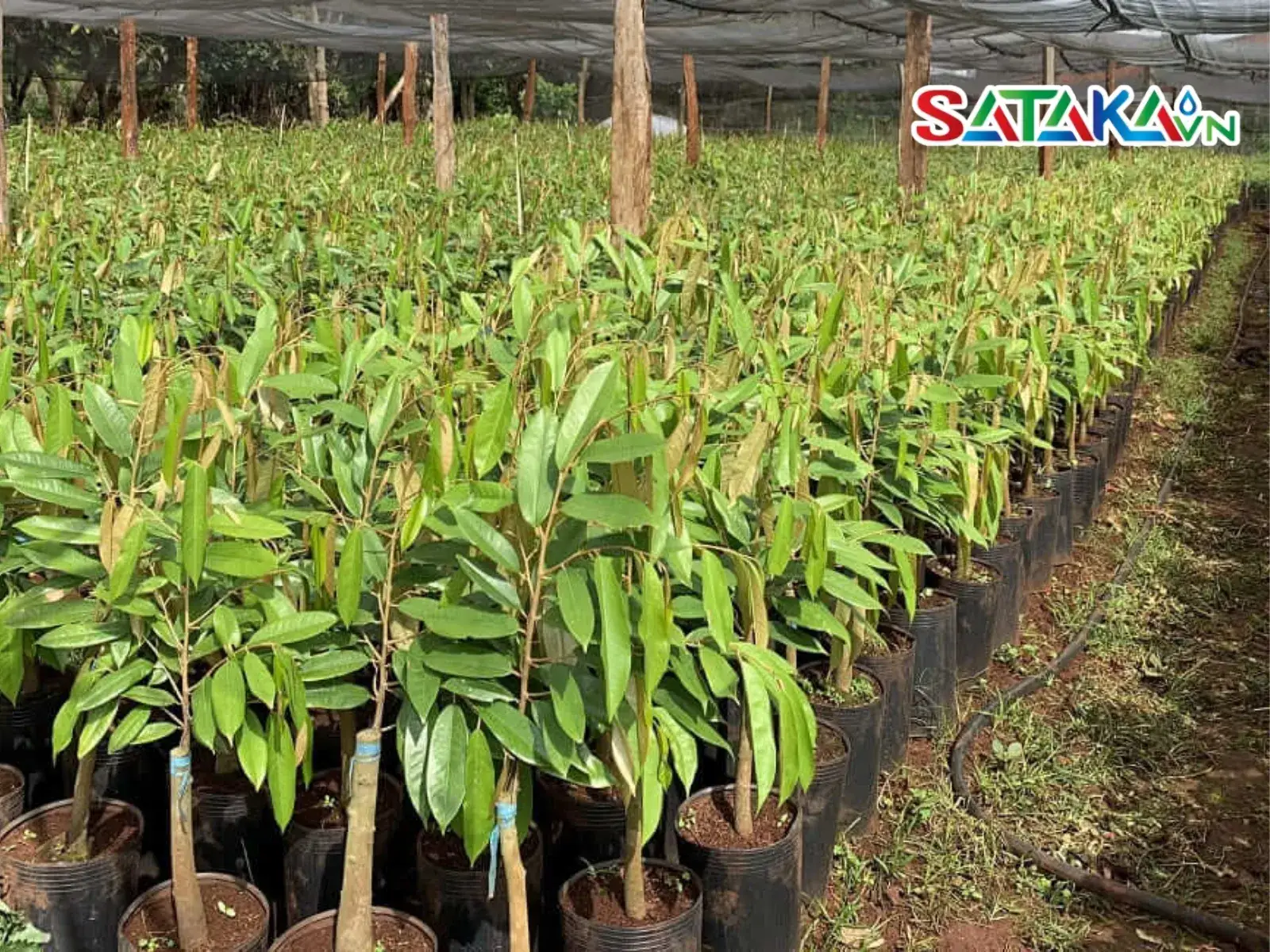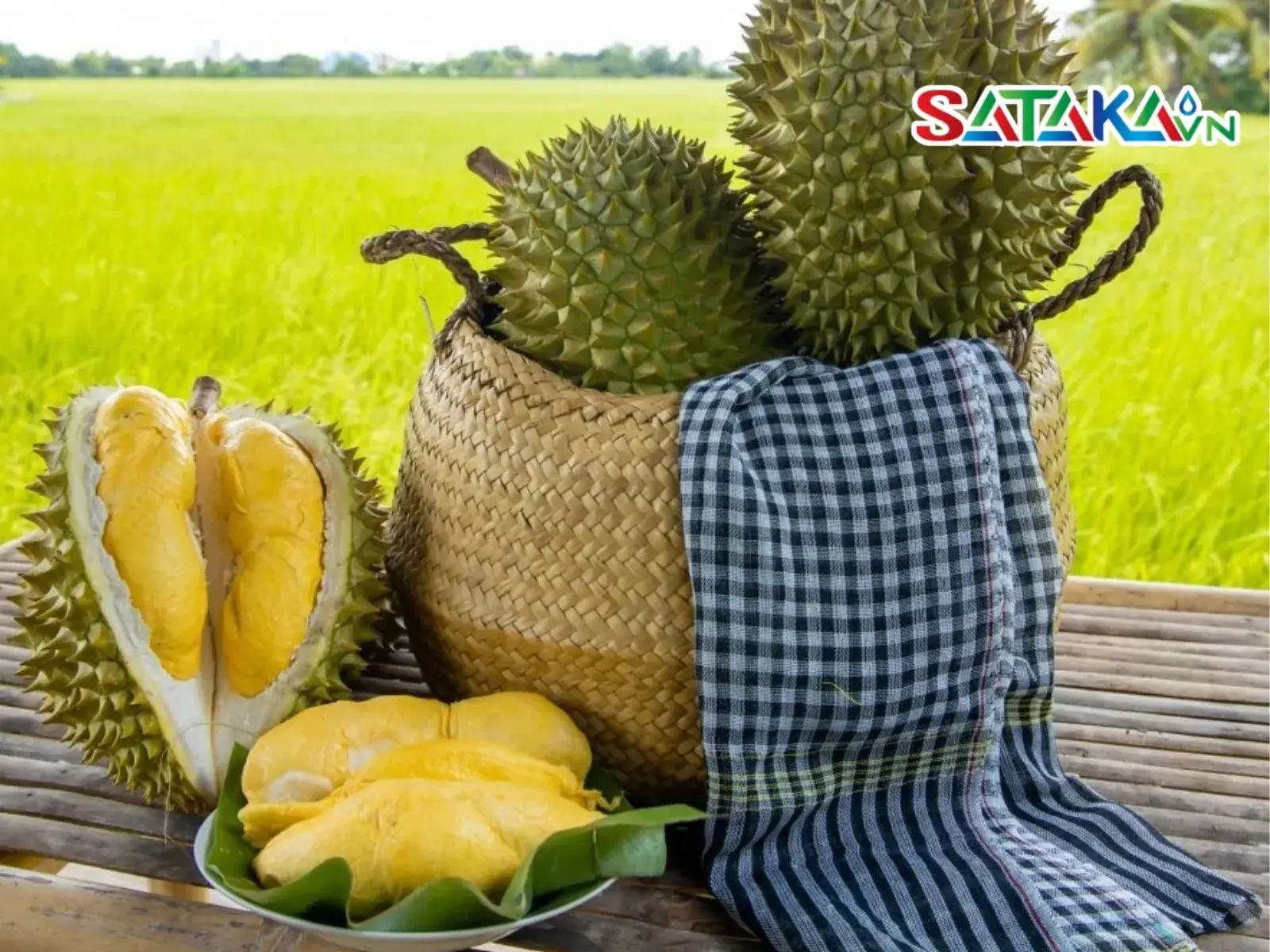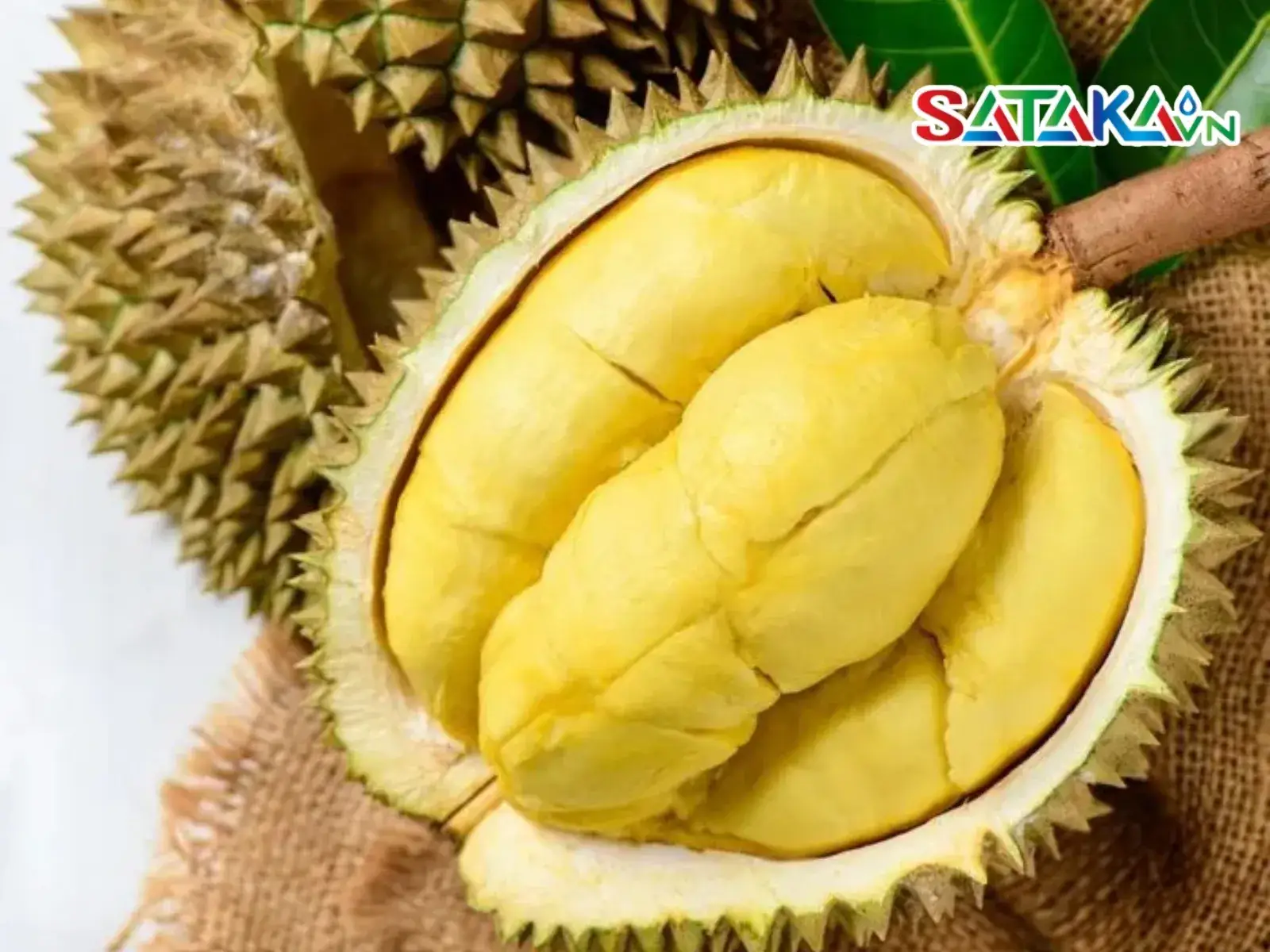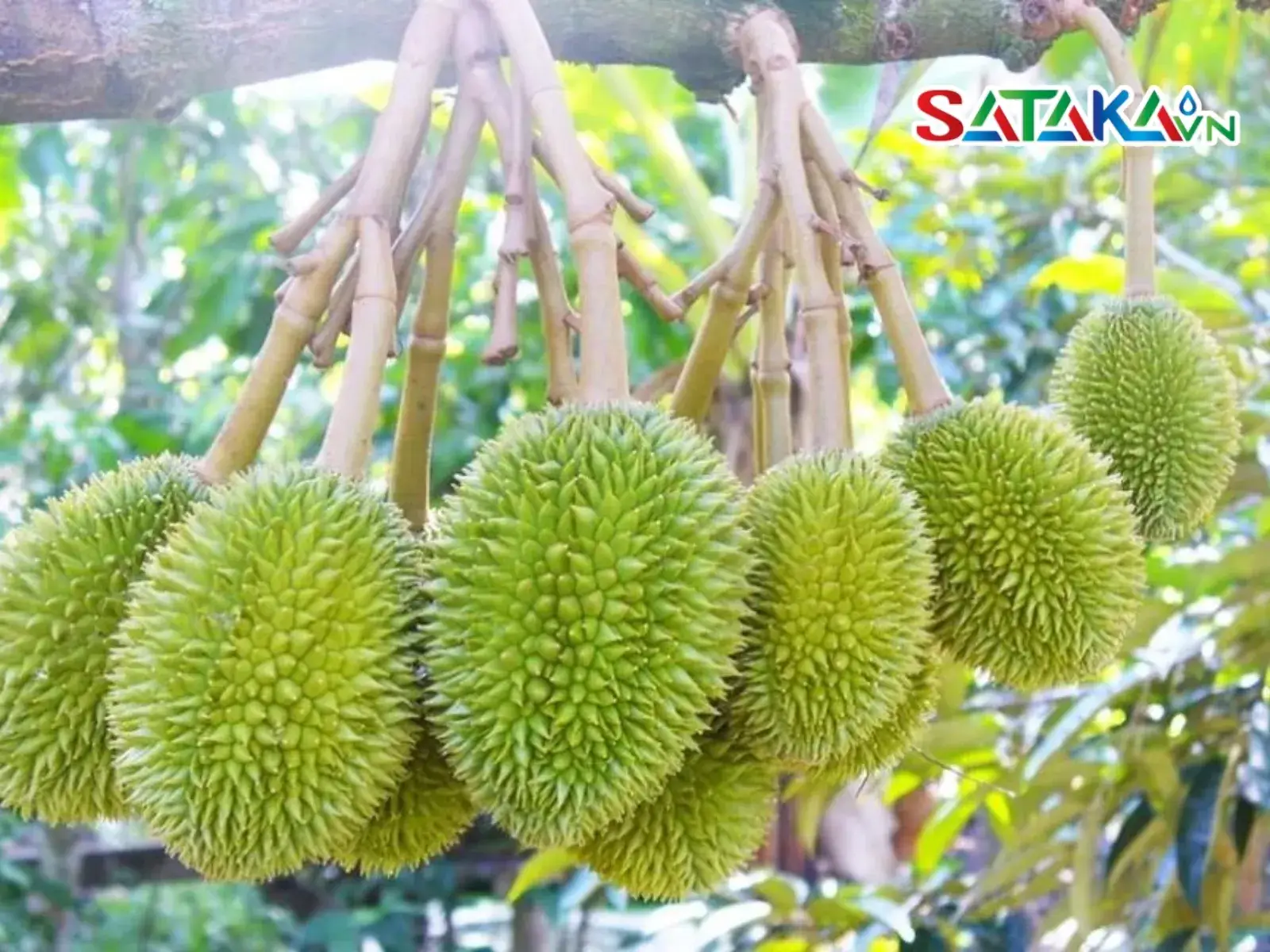Discover how to choose the right durian tree to ensure healthy growth and high yields. Detailed instructions for successful choice.
Starting your durian cultivation journey, one of the most critical decisions is selecting the right durian saplings. Choosing the right variety not only affects yield but also determines the quality of the fruit. With numerous varieties available on the market, understanding the essential factors in sapling selection will help you grow healthy trees that produce delicious fruits and bring high economic value. In this article, Sataka will guide you in detail on how to choose the best durian saplings, from identifying suitable varieties to key factors to consider during planting and care.
One of the most important factors in selecting durian saplings is ensuring their quality. High-quality saplings not only impact yield but also ensure the stability and quality of the future crop. To identify a good sapling, pay attention to specific characteristics. Quality saplings often have straight trunks, no bending or distortion, naturally green and evenly growing leaves. These saplings also tend to have good resistance to pests and diseases, making care and harvesting easier.
The structure of the durian sapling is another critical factor when choosing. Saplings with a robust and healthy appearance are more likely to grow well and yield high productivity. Quality durian saplings usually have straight trunks, no warping, with evenly distributed green leaves. These are indicators of a healthy tree with good resistance to diseases.

Like a durian tree
Each durian variety has specific regional requirements for optimal growth. Different varieties may require distinct soil and climatic conditions to thrive. Thus, selecting a planting area that suits the characteristics of your chosen variety is essential. This ensures healthy tree development, better fruiting capacity, and high-quality durian fruits.
Soil characteristics play a crucial role in sapling selection. Not all soil types are suitable for every durian variety. Consider factors such as pH level, soil structure, drainage capacity, and nutrient availability to ensure the soil meets the sapling's needs. Ideal soil for durians typically has good drainage and sufficient nutrients to support healthy growth. Choosing the right soil type helps ensure strong tree development and high yields.
When searching for high-economic-value durian varieties, three stand out: Ri6, Thai (Monthong), and Musang King. Each variety has unique characteristics and advantages, allowing you to choose one that aligns with your cultivation conditions and market demands.
Ri6 is one of the most notable durian varieties, particularly in Vinh Long province. This variety is renowned in Vietnam for its quality and reliability in the fruit market. It is easy to grow, has stable flowering and fruiting capabilities, and allows for off-season flowering management. Ri6 durians ripen early, enabling farmers to capitalize on high prices at the beginning of the season when supply is limited.

Durian Ri6
Advantages: Easy to grow, pest-resistant (though difficult to recover once infected), high yield, and consistent fruiting.
Thai durian, also known as Monthong or Dona, is the most popular durian variety among Vietnamese farmers. Due to its superior adaptability and high economic value, it is widely cultivated in the Southeast and Central Highlands regions. Many farmers in the Mekong Delta have switched from Ri6 to Monthong to meet export standards for markets like the USA, Australia, and Japan.

Thai Durian (Monthong)
Advantages: Highly adaptable to various environments, effective pest resistance, abundant fruiting, and high yield.
Musang King, originating from Sabah, Malaysia, is famed as the "king of durians" due to its unique flavor and high economic value. In Vietnam, Musang King has been successfully trialed in the Central Highlands and Mekong Delta, opening new prospects for agriculture.

Musang King durian
Advantages: Thin skin, distinct oval shape, and easily segmented into five clear grooves.
When selecting durian varieties to grow in Vietnam, consider factors like growing conditions and market demands. Below are three popular varieties highly valued for their economic potential:
Once you’ve chosen the right variety, proper planting and propagation are key to healthy development and high yields. Follow these basic steps:

How to grow durian trees

Note when choosing a good durian variety
Selecting the right durian saplings is the first crucial step to successful cultivation. By understanding key factors, from sapling selection to planting and care, you can achieve optimal yield and fruit quality. Sataka hopes this article provides you with a clear and comprehensive guide to choosing suitable durian saplings. For further advice or support, don’t hesitate to contact Sataka for professional assistance!